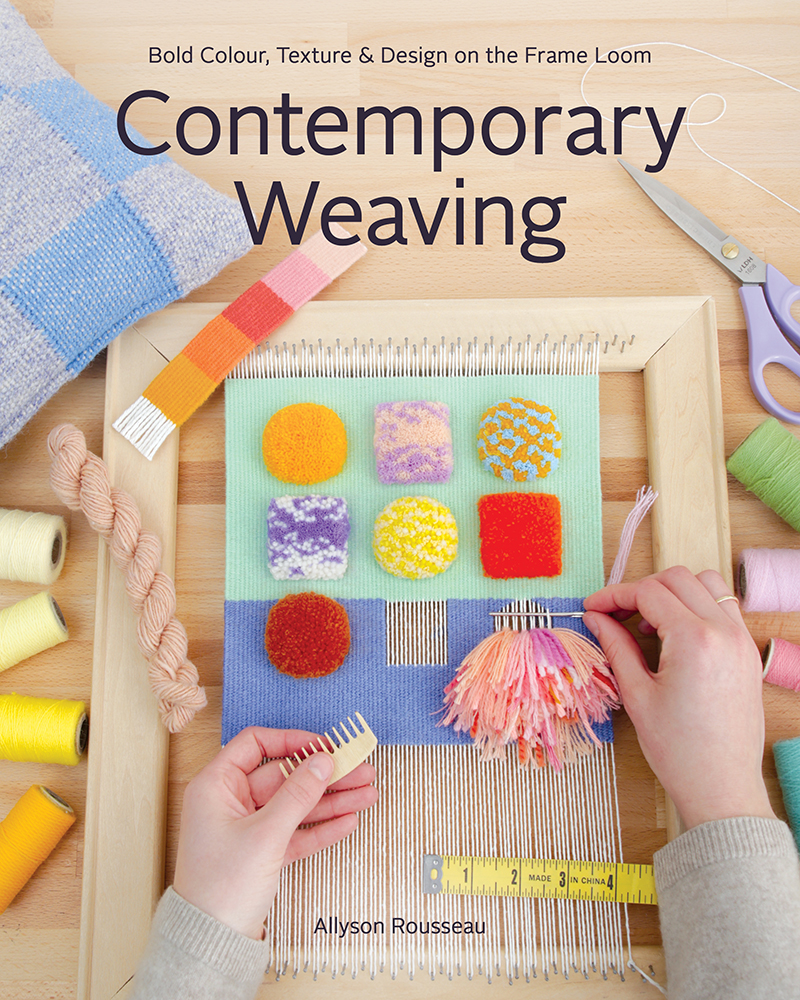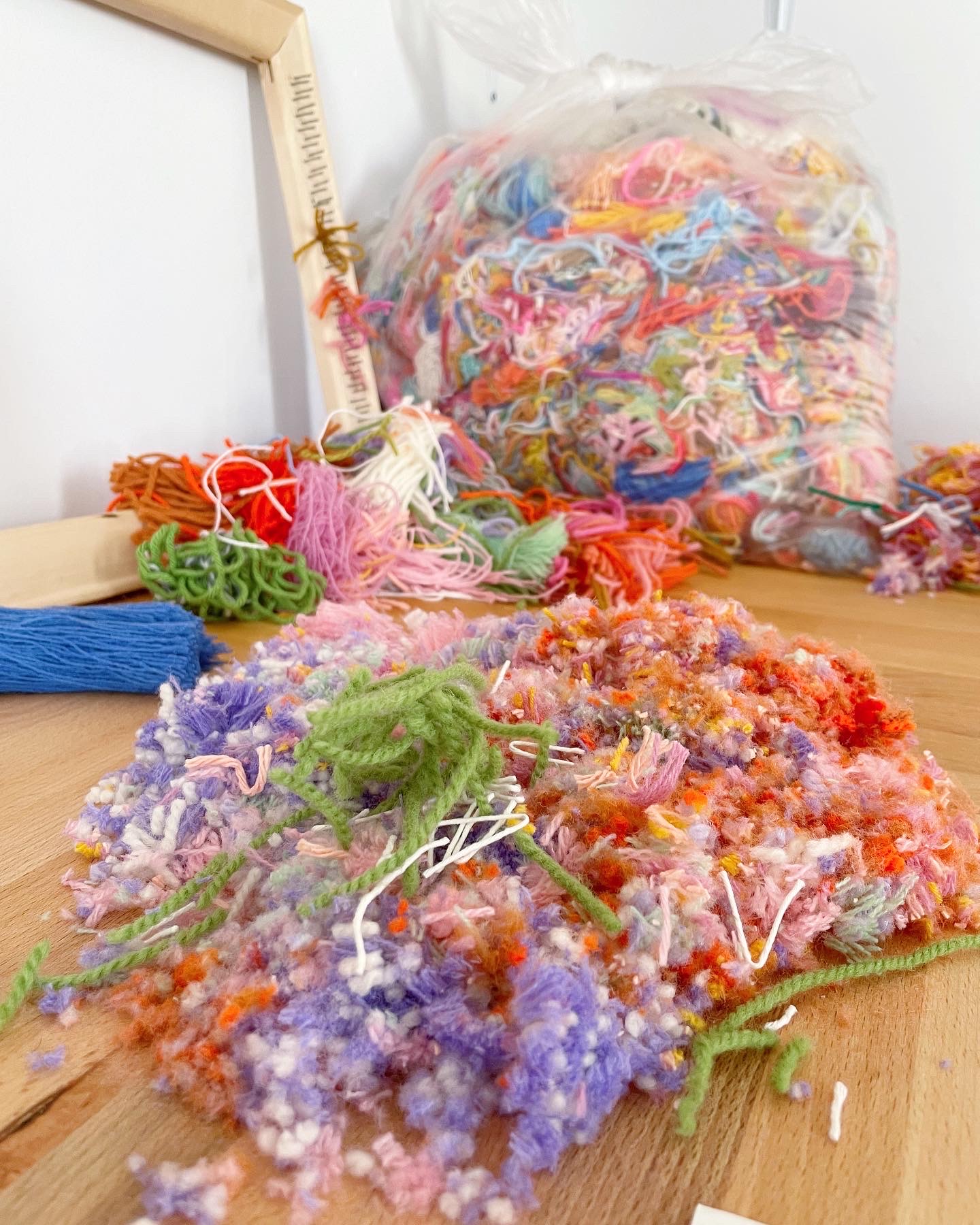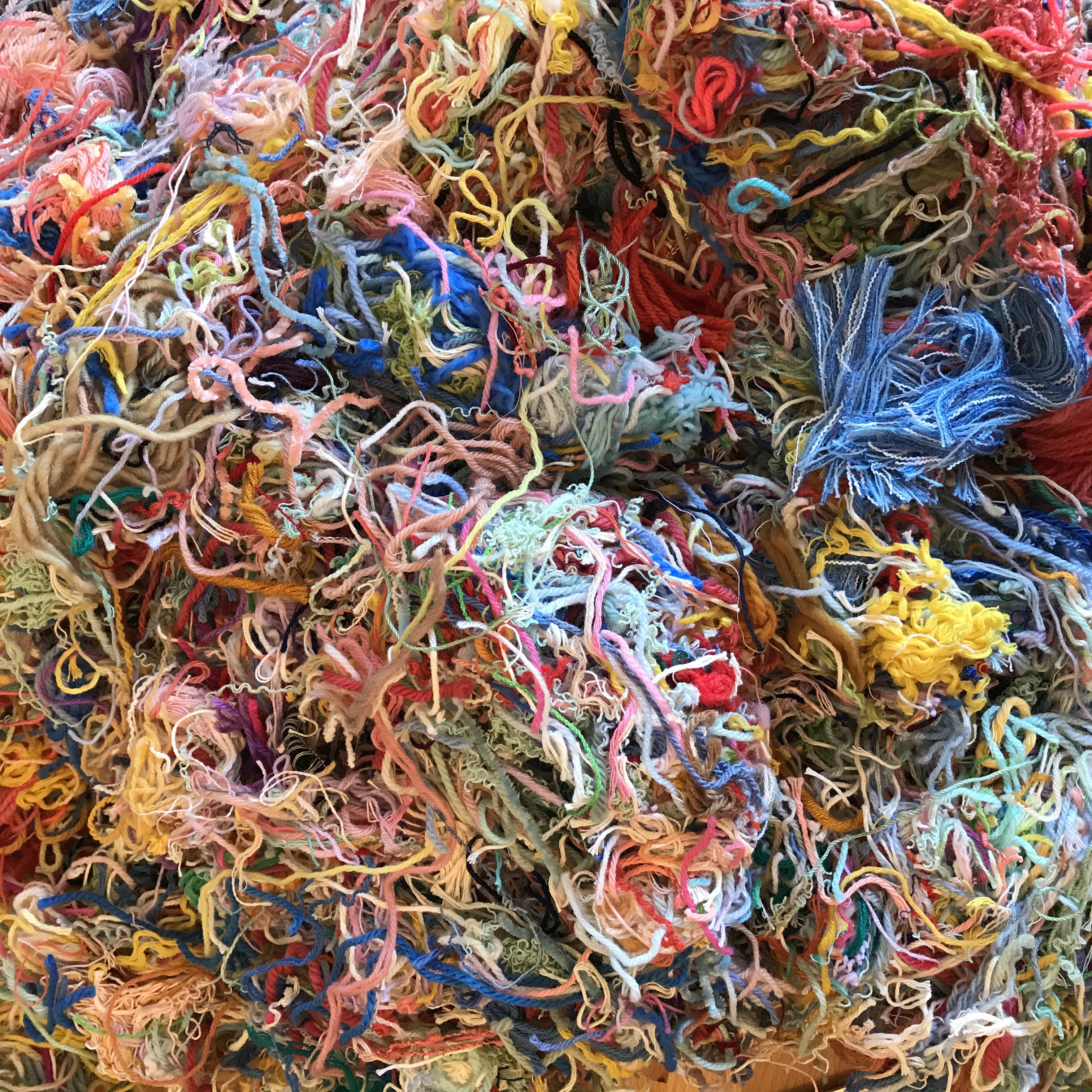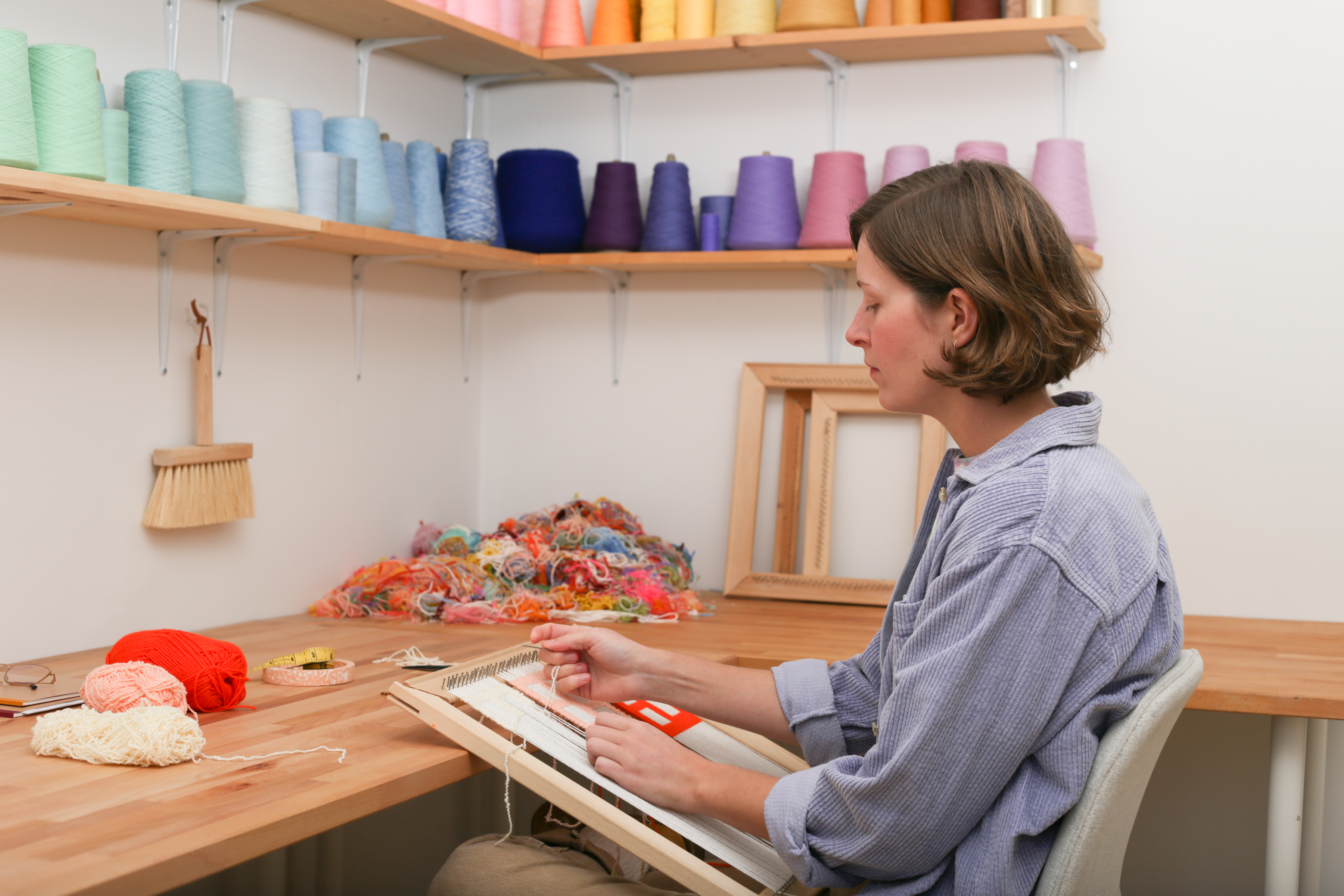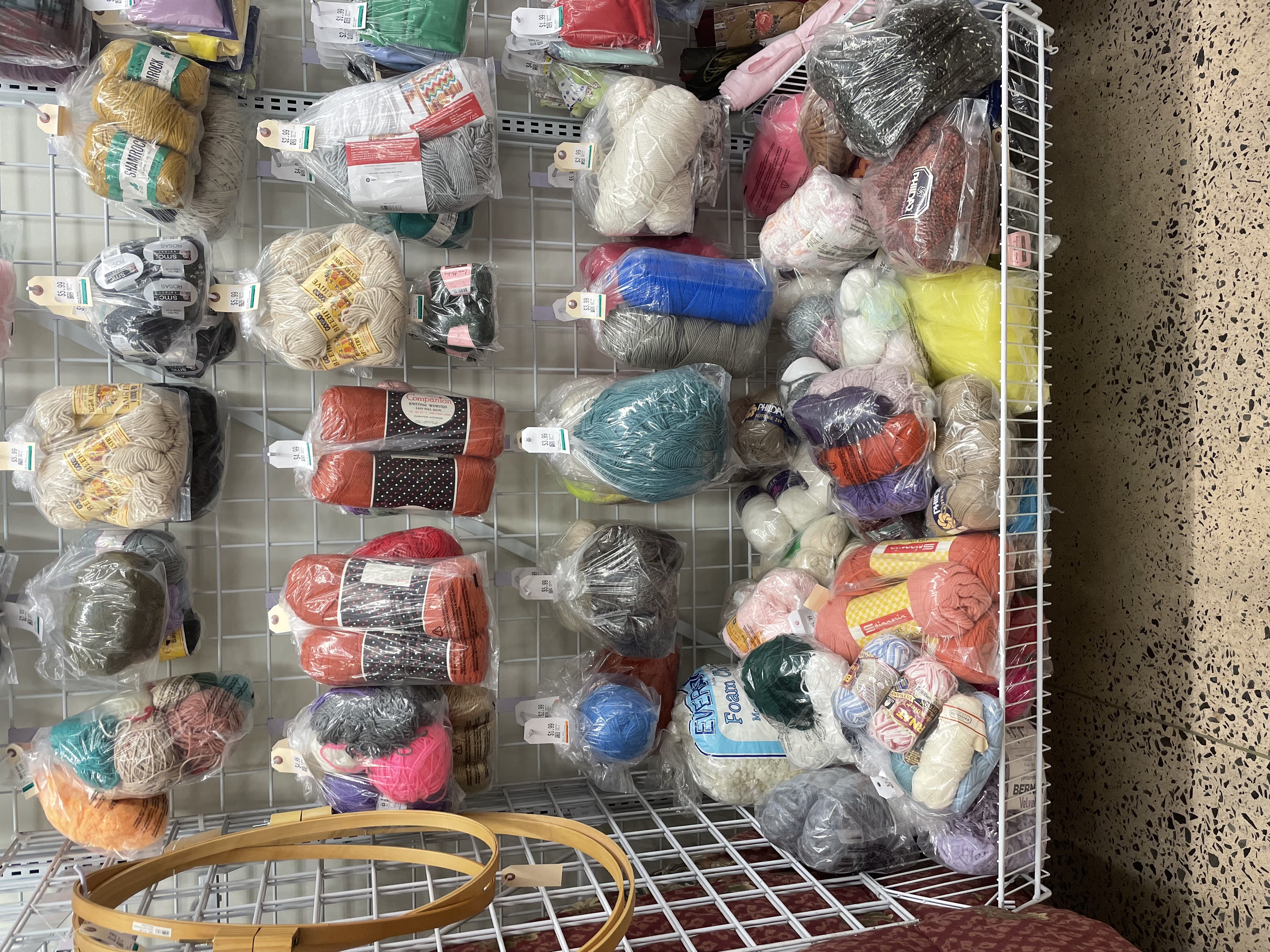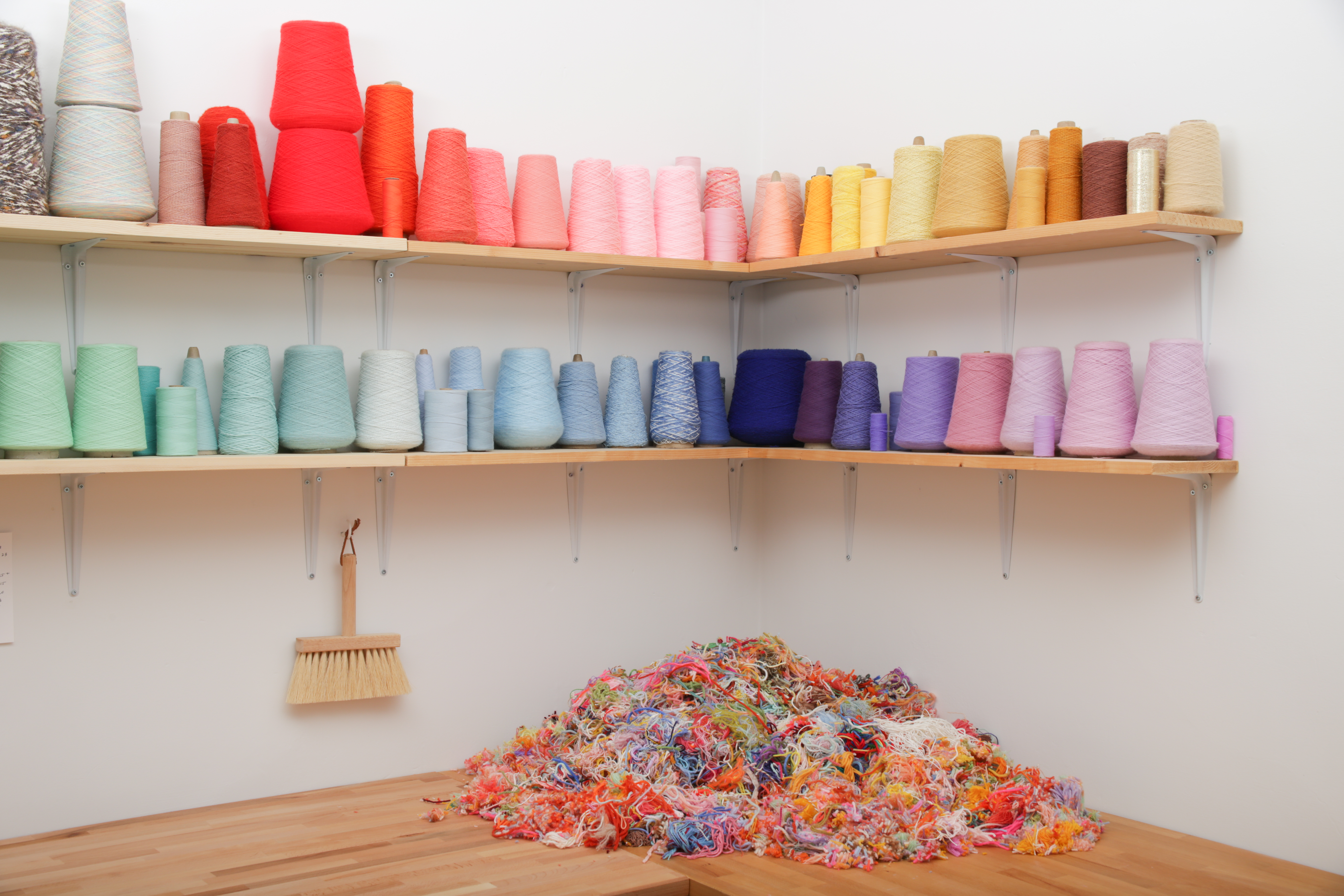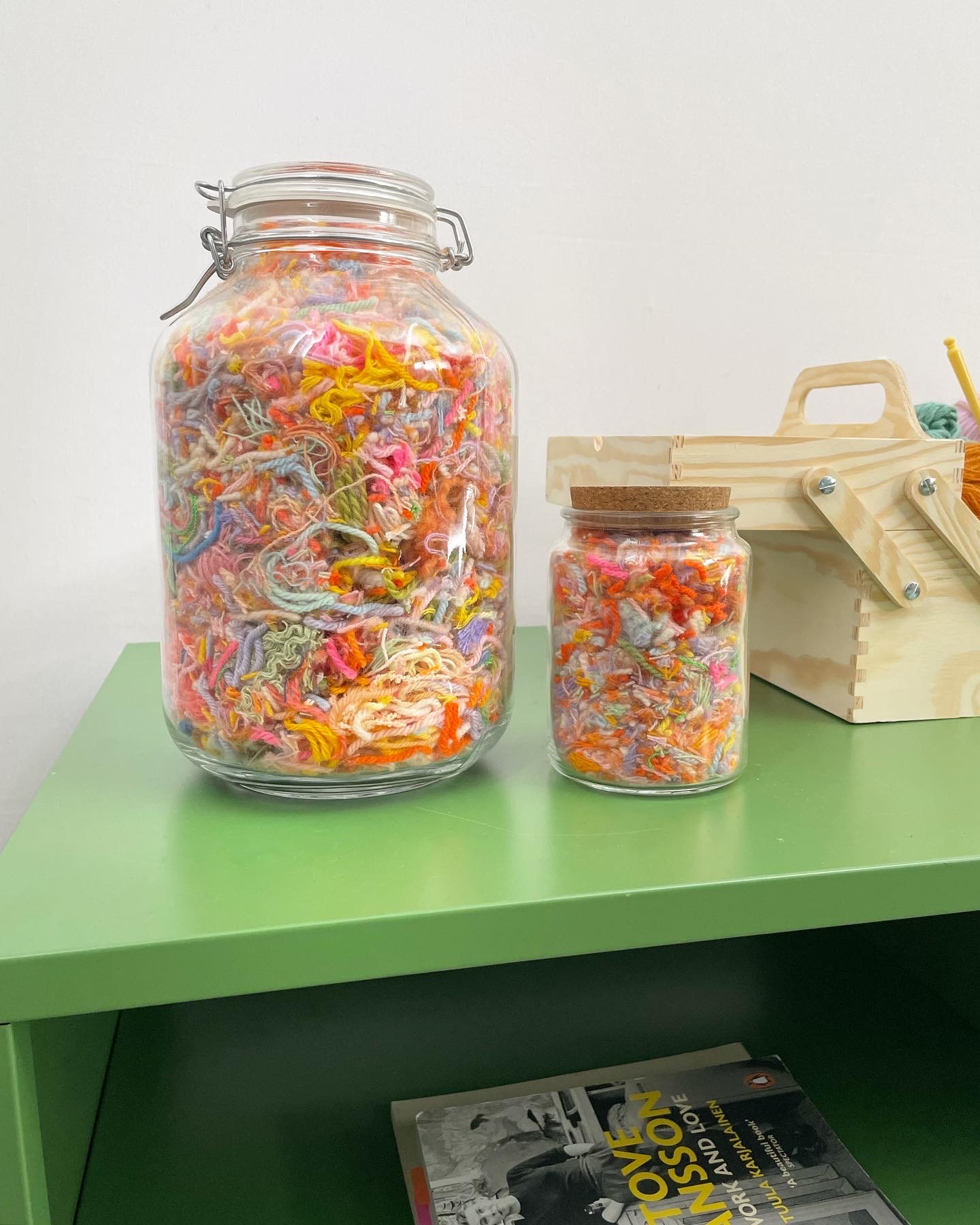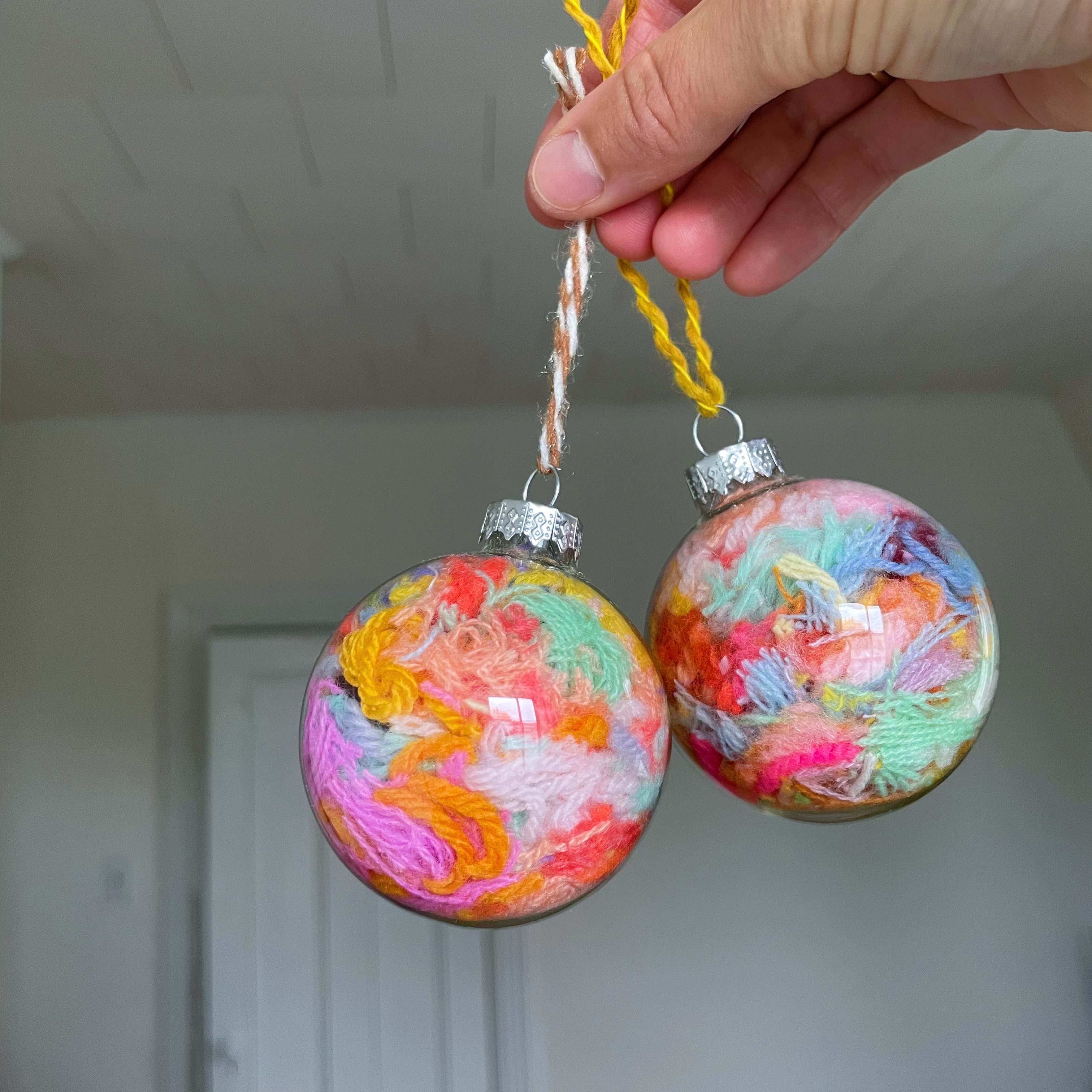Yarn Practices and Projects with Allyson Rousseau
Posted by Allyson Rousseau on Aug 22nd 2023
For fellow weavers and weavers-to-be, my book Contemporary Weaving: Bold Colour, Texture & Design on the Frame Loom was written for you!
Something that I briefly touched upon in the book but didn’t dive too deeply into; is an important issue (or opportunity) in my weaving practice.
Waste!
With every weaving that I make, there is a small pile of yarn “waste” created and brushed aside on my table…getting larger and more colourful every day.
It has always been very obvious to me in the 10 years that I’ve been weaving, that *crafts* or art making in general has the potential to create a lot of material waste. Since day 1 in my art practice I have consciously worked towards developing more environmentally friendly and sustainable methods of recycling the yarn scraps and dust that accumulate so quickly, and luckily, there are many creative ways of doing so.
First and foremost, It begins with where you purchase your materials.
When I began weaving, I was a broke university student without much money to spend on art supplies of any kind. I afforded the materials on the required list of supplies for all of my art classes, and anything outside of that was a big splurge. So! I did what you do when you can’t buy new. I checked the local thrift stores and found some perfectly fine, barely-used yarns of varying quality and colour.
Thrifting for yarn quickly became one of my favourite things to do, and I have since acquired a pretty substantial collection of fibres on cones that adorn and decorate the walls of my studio. The only time I ever buy yarn brand new is if it’s a natural fibre from a local farm or supplier, or if it’s a warp fibre that needs to be very consistent in its strength and colour.
I feel good about creating art from fibres that “need new homes”, and even if they’re synthetic materials. Those yarns already exist in the world and they need to go somewhere, so why not turn them into something beautiful. An indirect benefit of sourcing materials second-hand is that it adds an extra layer of originality to my work. When I run out of a thrifted yarn, I will likely never find that same yarn again, making each work truly unique.
Here are some fun examples of ways that you can reduce and recycle your yarn waste (that may also apply to quilters with fabric and thread!):
- Use them as stuffing material for other projects (like the pillow project in my book!)
- Fill clear containers and put on display to enjoy as decor
- Christmas ornaments! (Great gifts for the crafters in your life)
I hope this post has given you some new ideas, and maybe even inspired you to learn how to weave. My book covers all bases for anyone wanting to give it a try for the first time, or expand on existing skills by exploring some fun projects.
Bye for now!
-Allyson
...
Allyson Rousseau is a Canadian artist and weaver. She earned her BA in Studio Art from the University of Guelph in 2014, after which she developed a self-taught weaving practice. Her work has been exhibited and published all over the world. She currently lives in Pictou, Nova Scotia.


